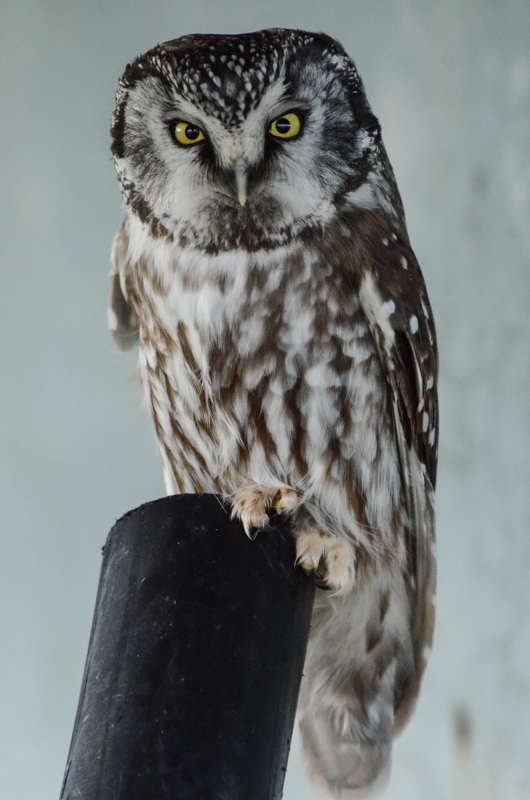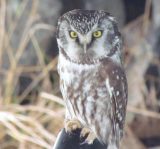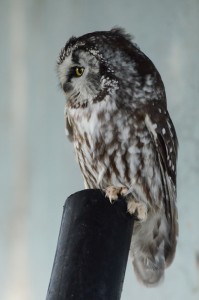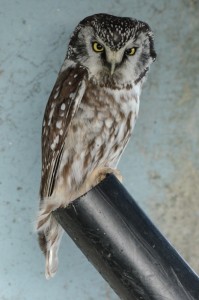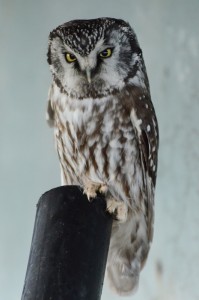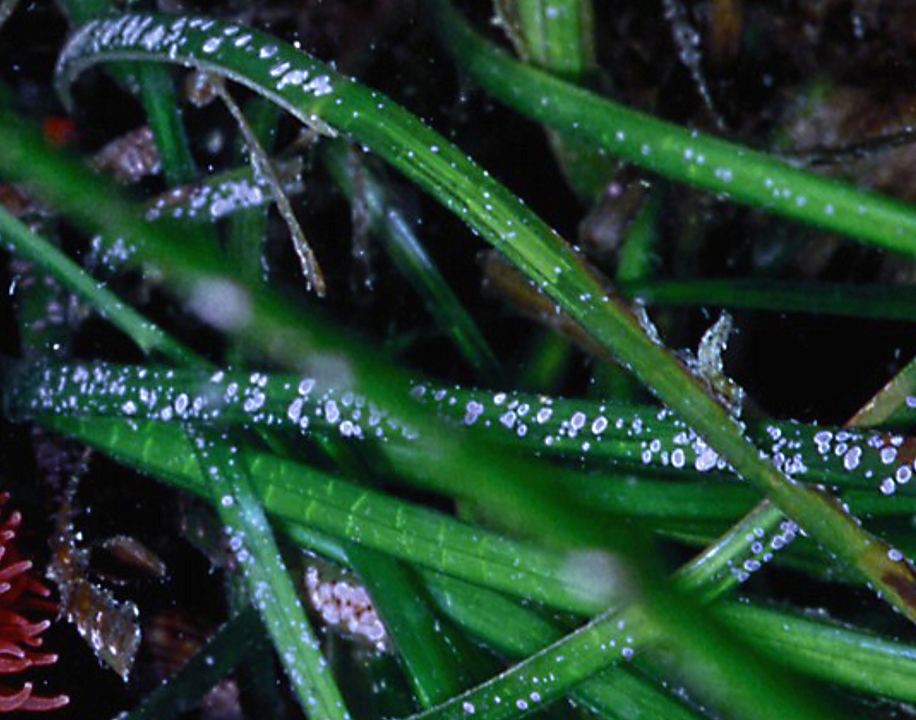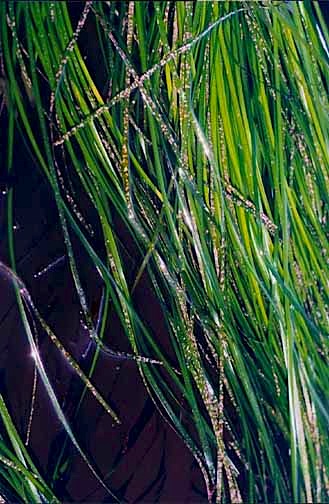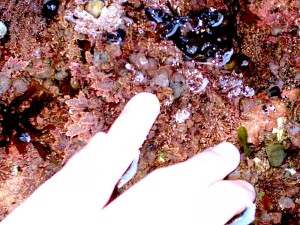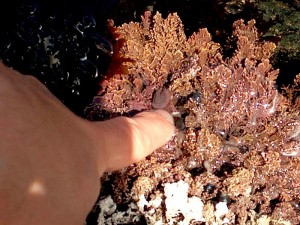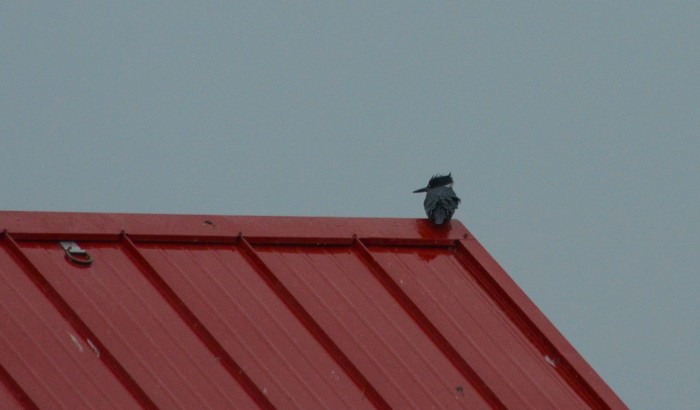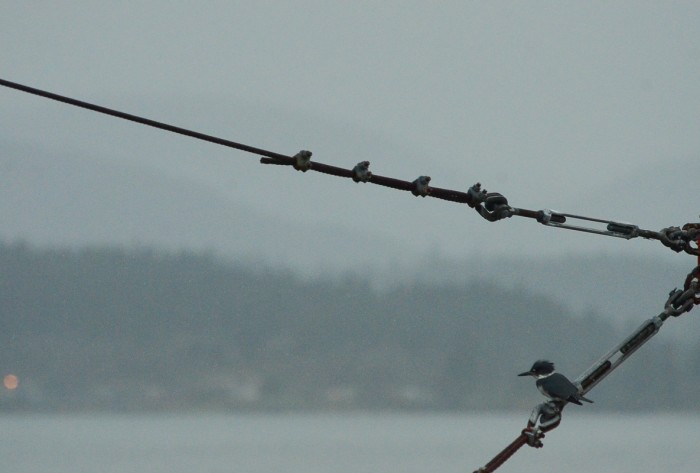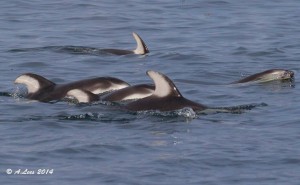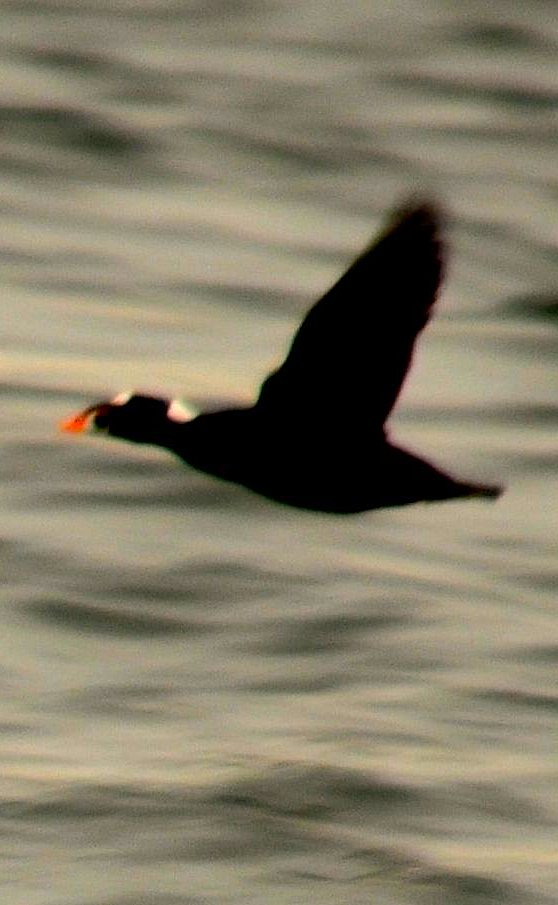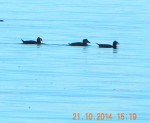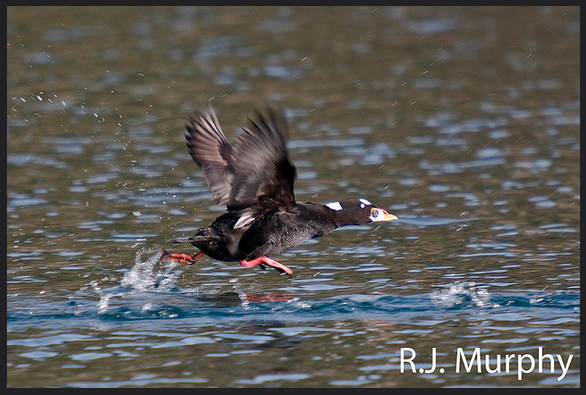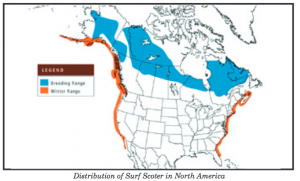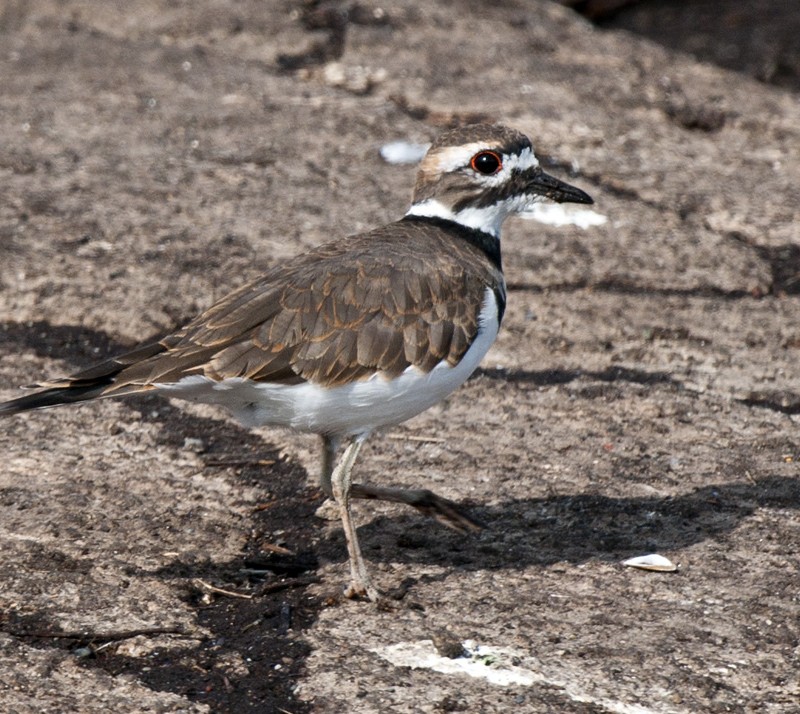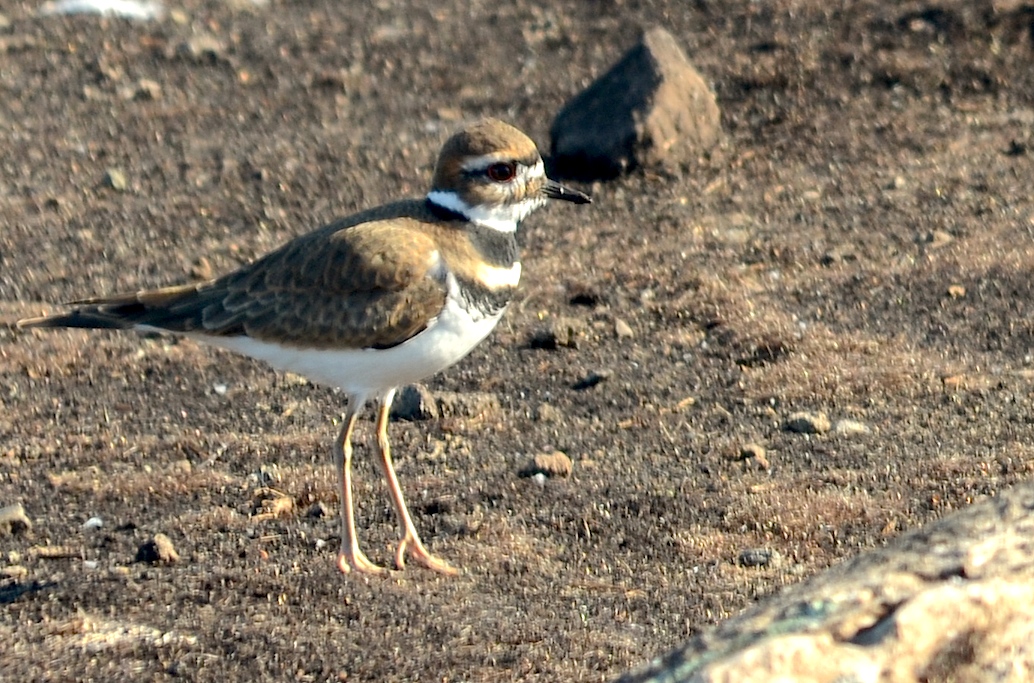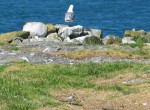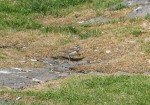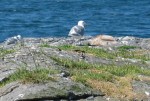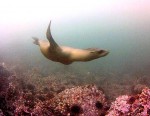I went to Race Rocks today with Val George for the Christmas bird Count. ( See other reports from today.) The highlight of course was the discovery of the first record for the Boreal Owl in Southern Vancouver Island . Some other observations from my visit are included here:
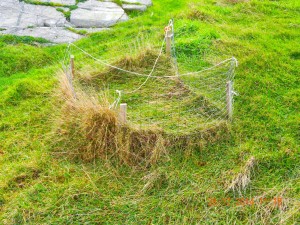 |
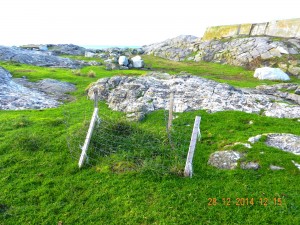 |
| Several 1 metre exclosures for goose grazing have been installed on the grass areas on Race Rocks. | Winter grazing by the Canada geese (introduced to Vancouver Island in the 1980s) has resulted in erosion in some areas of the island, and grass turf cover is prevented. |
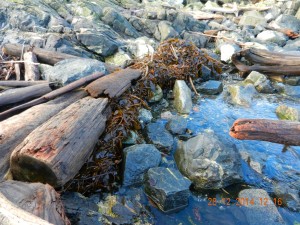 |
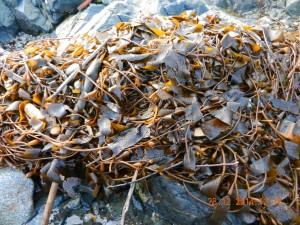 |
| Drift Macrocystis at the jetty. This Giant Kelp can grow anchored at great depths but winter storms will lift it up and the main contribution to energy-flow in the ecosystem comes from decomposition on the shoreline. | Macrocystis grows in areas of high salinity, so not in he brackish estuarine conditions of the Strait of Juan de Fuca , but not at Race Rocks where it ends up only as drift in the strand line. |
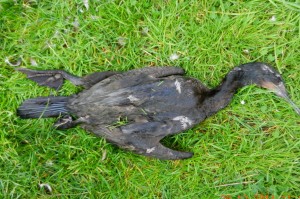 |
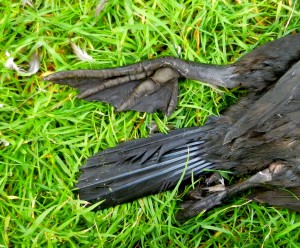 |
| A dead cormorant, (probably Brandt’s ). | Interesting webbed foot structure. |
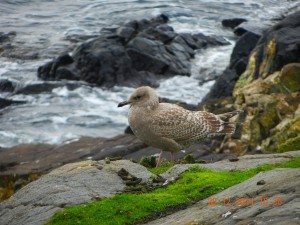 |
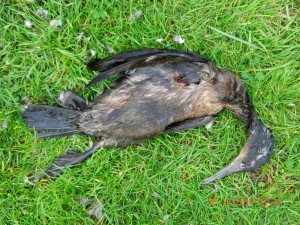 |
| A 1st year juvenile Thayer’s Gull | The breast had a hole and internal organs were eaten. It was probably from an eagle attack. |
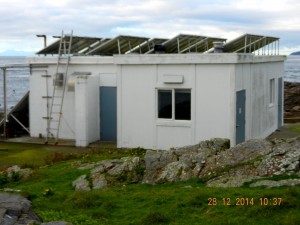 |
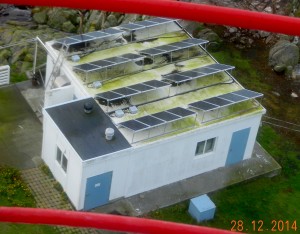 |
| This year, the college has finished tilting the solar panels. Increased energy efficiency has been noted. They were originally installed flat since we were concerned that the strength of the wind may damage them. This hasn’t happened. | View of the energy building roof from the top of the tower. |
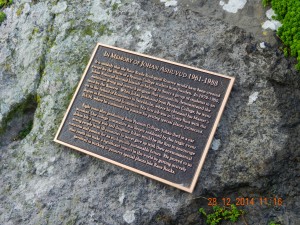 |
.. |
| This fall a plaque has been installed to honour Johan Ashuvud, who as a student at Pearson College, was instrumental in having Race Rocks designated as an ecological reserve in 1980 | .. |
Other Ecological reserves wardens reports are available here:

